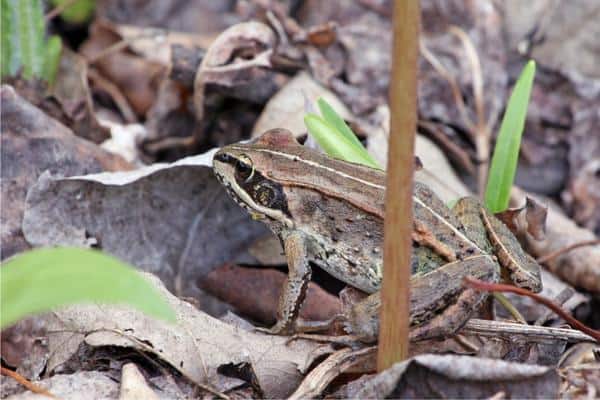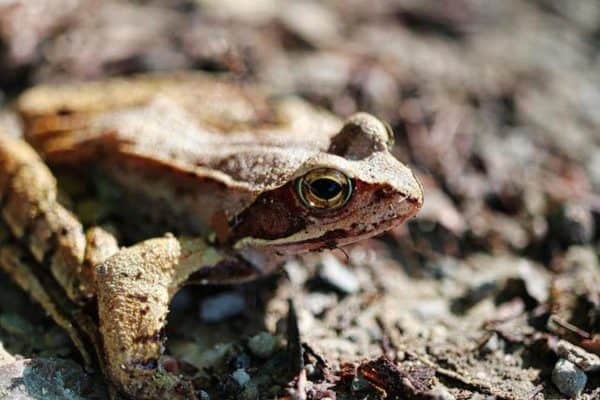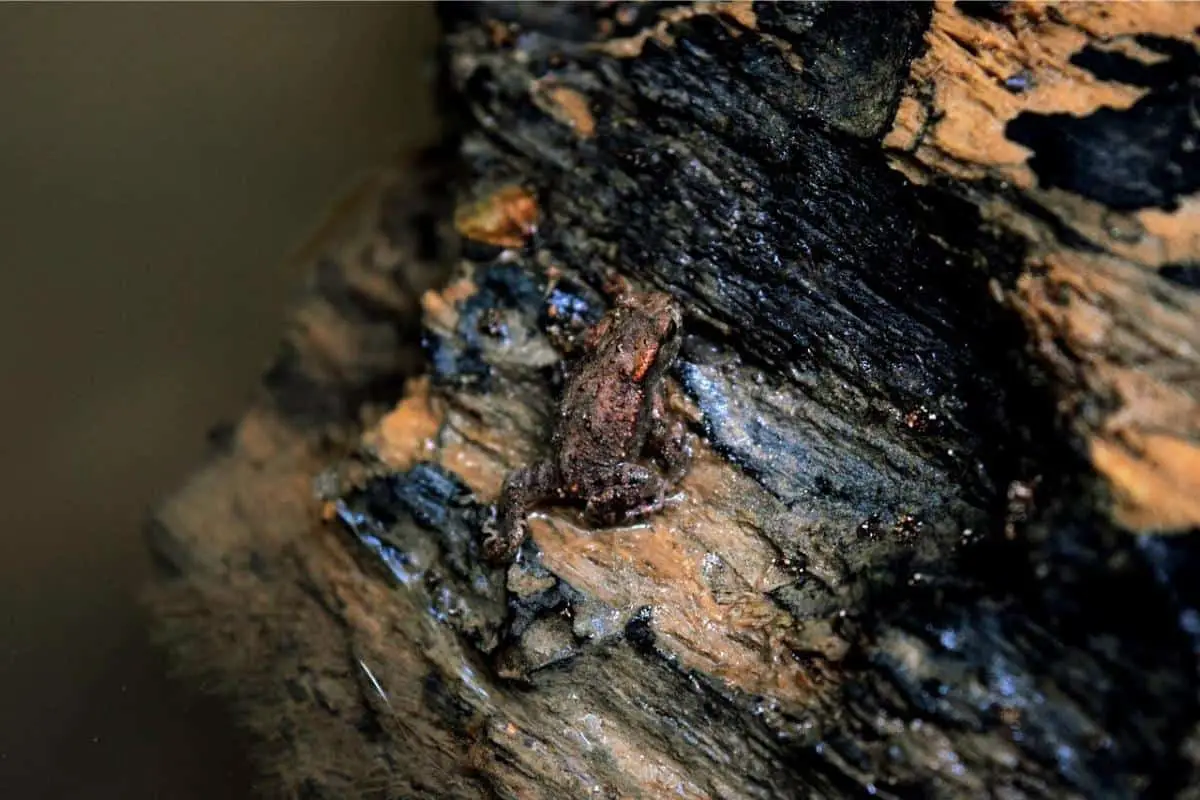There are several frog species that call North America home, and they have each developed unique adaptations over time to be able to survive. One of the most common frogs found in North America is the wood frog, and it has plenty of features that make it capable of surviving changing seasons, numerous predators, and more.
8 Wood Frog Adaptations

Scientific name: Lithobates sylvaticus
The wood frog is well known for being able to survive while completely frozen, which is how it gets through the winter seasons, but there are other adaptations that help this amphibian thrive in more than one time of environment.
1. Ability To Freeze
One of the most unique adaptations that wood frogs have evolved over time is the ability to freeze during harsh winter months. This allows them to survive the harshest season of the year.
When the wood frogs are frozen, their heart rates slow down until they stop beating completely. They will also stop breathing, and ice will grow around the frogs.
Wood frogs will thaw once the weather begins to warm up, and they will go into their mating season. These animals are able to freeze over because of an antifreeze substance, which keeps individual cells from freezing. However, there will be ice between the cells.
2. Sticky Tongue
Like other frog species, the wood frog has adapted a long and sticky tongue that allows it to easily catch insects for food. Wood frogs will commonly catch flies, mosquitos, spiders, and other types of bugs.
They have also been known to eat works, snails, slugs, or the larvae and eggs of other frogs. As tadpoles, wood frogs have a diet consisting of decaying plants and algae.
This sticky tongue is what allows these frogs to be such good hunters. This combined with their ability to leap let them easily catch whatever prey they set their eyes on. Of course, these frogs prefer to sit and wait for food to stumble by them.
Part of the wood frog diet includes;
- Flies
- Snails
- Mosquitos
- Slugs
- Larvae
- Tadpoles
3. Early Breeding
When wood frogs start to thaw from their frozen states in the early spring, they start their mating season. These frogs are one of the first types of frogs to mate each spring, which is an adaptation that gives them a major advantage.
They often have eggs and tadpoles in shallow pools that form when the ice melts. This water is free from predators and allows for many of the young wood frogs to survive.
Tadpoles and larvae in larger bodies of water will grow faster than other types of frogs as well, giving them an advantage over other species. This is another reason that tadpoles are a big part of the wood frog diet.
4. Short Tadpole Life
Wood frogs are typically found in areas with short summer seasons, which means they have adapted to have one of the shortest tadpole lifespans. They will grow into adult frogs within two months.
A short tadpole life plus the shallow ponds they thrive in make wood frogs more likely to survive into adulthood than other types of frogs.
Once wood frogs become adults, they will live for an average of three years. They do not reach maturity until they are one or two years old. These frogs actually have the shortest tadpole lifespan of any other frog found in North America.

5. Loud Cry
Wood frogs are not predator animals, but they do have a helpful defense mechanism. When threatened or scared, the wood frog can let out a loud cry to scare off predators.
This is mainly used if picked up by a predator, to get them to drop the wood frog. The loud cry is louder than other noises the frog might make.
These amphibians have another call they use during mating season, which resembles a chuckling or quack. The mating call is also loud, but not as loud as the cry they make when scared. During other times, the wood frog tends to be quiet.
6. Relative Recognition

Wood frogs are one of the only types of frogs that have been found to recognize their relatives. Tadpoles in the same pools of water will gather in the same area.
Wood frogs are able to recognize family members in tadpole and adult forms. Siblings have been shown to seek each other out, and stay in the same area.
Wood frogs are actually one of the amphibians that is the most capable of recognizing family members. It starts as tadpoles and continues as adults. This unique adaptation is what leads large populations of wood frogs to gather in one area.
7. Burying Itself
In some areas where wood frogs thrive, the winters do not get cold enough for them to completely freeze and stay frozen. Frogs in these areas have adapted to be able to bury themselves deep underground. They have adapted to burrow deep enough until they reach ground that will freeze and let them stay that way.
This is where they will spend the winter season. Even wood frogs that freeze fully will still bury themselves before the cold weather really starts. Being able to burrow underground is what allows wood frogs to stay frozen throughout the entire winter.
8. Camouflage
Wood frogs, as the name suggests, are usually found living in wooded areas. They are sometimes found in grasslands or suburban areas. The coloring of these frogs, grayish brown, allows them to blend in with the wood found in their habit.
They can also easily blend into leaf litter found on the ground, and dirt. Some wood frogs are more green, letting them blend in with grass and shrubbery.
This coloring allows for wood frogs to be camouflaged and keeps them hidden from predators. They also have black masks across their eyes, which look similar to a mask. These frogs are also small in size, staying between 1.5 and 3 inches big.
Wrap up
Wood frogs are a common North American amphibian that has several adaptations key to its survival. Not only can they survive being frozen, but they also gather in large populations of familiar frogs, blend in with their surroundings, and are skilled at sitting silently to wait for prey.




